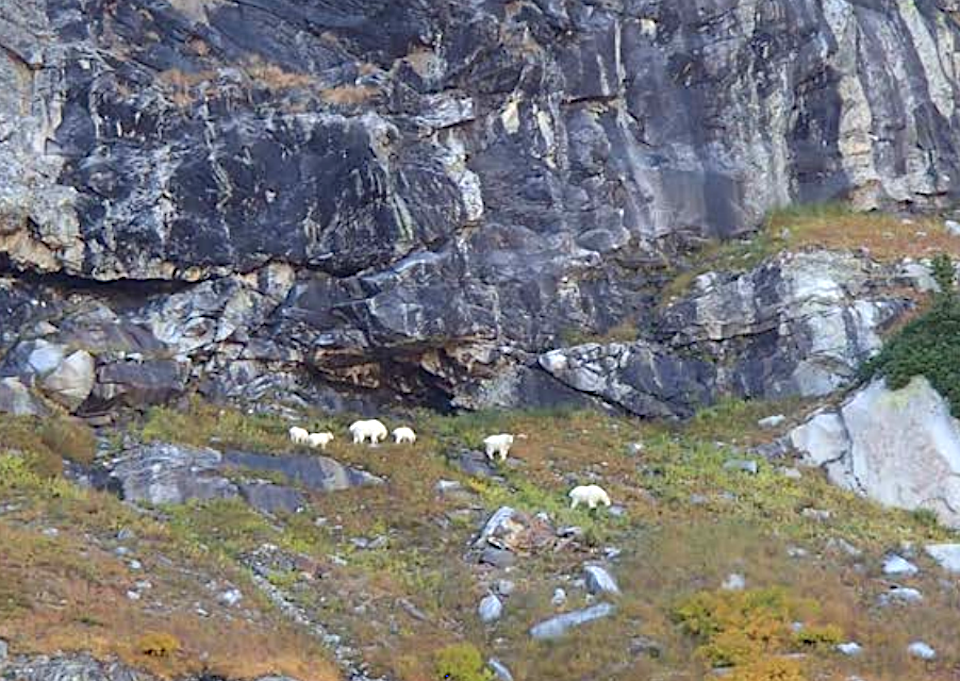
Grand Teton National Park staff want to remove nonnative mountain goats from the park/NPS
Nonnative mountain goats in Grand Teton National Park will either be relocated out of the park or killed under a proposal that seeks to remove the animals from the park and adjacent John D. Rockefeller, Jr. Memorial Parkway.
Public comment on this proposal is being taken through January 6. The aim of the goats' removal is to aid in the conservation of a native population of bighorn sheep and protect other park resources and values from the rapidly growing nonnative mountain goat population.
The Mountain Goat Management Plan and Environmental Assessment is open for public review. The park also is hosting an open house on Wednesday, December 12, at The Wort Hotel in Jackson, Wyoming, from 4:30 p.m. to 6 p.m. The hotel is located at 50 North Glenwood Street.
Currently, the nonnative mountain goat population within the park is estimated at approximately 100 animals. Resident mountain goats within the park are likely from a population that was introduced outside the park southwest of the Teton Range in the late 1960s and early 1970s. First observed in the Teton Range in 1979, they have now established a breeding population that is growing rapidly.
The Teton Range within the park is also home to a small herd of approximately 80 native bighorn sheep. Prior to 2015, the population was estimated to be approximately 100-125 sheep. This herd is one of the smallest and most isolated in Wyoming, and has never been extirpated or augmented. The Teton Range herd of native bighorn sheep is of high conservation value to the park, adjacent land and wildlife managers, and visitors.
Research indicates that the potential for resource competition and disease transmission between mountain goats and bighorn sheep is evident, and expected to increase. Bighorn sheep are highly susceptible to pathogens and disease transmission. Without active management, the mountain goat population is expected to continue to grow and expand its distribution within the park, threatening the existence of the native Teton Range bighorn sheep herd.
Park staff believe action is needed soon because the mountain goat population in the park is currently at a size where complete removal is achievable in a short timeframe. The estimated growth rate of the population of goats in the park suggests that complete removal in the near future may become unattainable after about three years.
Three alternatives to respond to the situation have been identified in the environmental assessment; 1) no action, 2) lethal and nonlethal removal of nonnative mountain goats, and 3) lethal removal of nonnative mountain goats.
The preferred alternative at this time is to use a combination of capture and translocation, and lethal removal methods. The goal would be to remove the mountain goat population as quickly as possible to minimize impacts to native species, ecological communities and visitors. Goats could be translocated to suitable locations where they are native, or to accredited zoos, or lethally removed. Based on current estimates of mountain goat numbers, significantly reducing or eliminating the population is achievable in the next few years.



Comments
There is absolutely no excuse to kill the goats. I don't care that they are not native to the area. They should be humanely moved or left alone.
Leave them alone. Let nature deal with this.
If there is a herd out there that could benefit from this herd, then use lethal/nonlethal removal. If not as mentioned best way is to completely remove them so as not to find their way back into the park.
I do trust that the NPS has done its homework on this issue. The arguments briefly outlined in the article make sense to me. There have been so many instances of non-native species being introduced into and area and then causing unintended consequences that were profoundly negative on the native ecosystem. In most of those cases, the issues were not understood until it was too late to reverse the situation. It seems that this is a rare opportunity to reverse the impact of this introduced species for the benefit of the native animals.
As much as possible, non-lethal means should be used, but given the terrain in which the goats live, I doubt that will be possible in all instances.
Since the goats were introduced outside the park and moved into the park boundaries, what steps will be taken to prevent this from reoccurring in the future? Is there still a population of mountain goats outside the park from this initial introduction?
Olympic National Park is currently using option 2 above and it's 50 years too late. The goats have doen much damage to the flora and fauna of Olympic Park. This sounds like an ongoing problem especially i goats can continue to move into the park. I hope they move quickly and stay on it.
I agree, that now is the time to act to move them. I agree with prior comment from Allen. Do it before it's too late. I too, would enjoy seeing them, but not at the cost of native ecosystem.
I would be in favor of non-lethal removal and relocation unless it is just to a place where they will find their way back into the park again. Otherwise, perhaps culling the non-native goats is the right solution. Hopefully, they can find a place to remove them to where they wont find their way back in. Maybe a wildlife management area far removed from Grand Teton?
Montana, Wyoming, and Idaho all have hunting seasons for mountain goats. Apparently this introduced population is found throughout the Greater Yellowstone Ecosystem, including areas where they can be hunted.
My understanding is that the biggest issue is that they have few natural predators in the area.